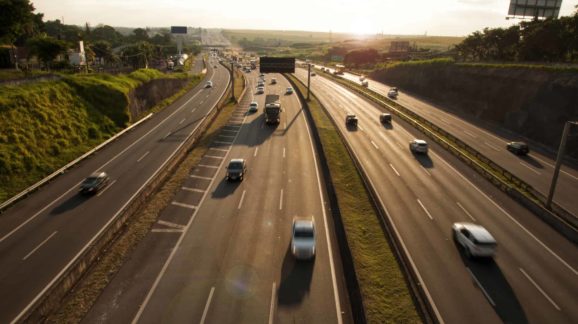Secretary Pete Scores an Own Goal

Photo Credit: Getty
It should have been an open goal. Everyone agrees that the nation’s highways need more funding. Everyone agrees that the gas tax has passed its sell-by date—people hate it and the rich can avoid it by buying electric vehicles. So, it should have been an easy, bipartisan score to promote a mileage based-user fee trial program to replace the gas tax. Transportation Secretary Pete Buttigieg was passed the ball, and proceeded to drill it into his own net.
In an interview with CNBC last week, Secretary Pete floated the idea of using a “Mileage tax” to help pay for the administration’s overwrought infrastructure package. In doing so, the Transportation Secretary sparked outrage. People reacted badly to the idea of a new tax, to the idea of a new tax to pay for a partisan political program, to the idea that people would be asked to pay twice, to the idea that rural people would pay more and city commuters less, not to mention the objection that a mileage tax would involve the government monitoring when and where we drove. The blowback was so intense that Secretary Buttigieg had to tell CNN’s Jake Tapper yesterday that the idea was being dropped.
Mileage based user fees (MBUFs) are neither a mileage tax nor anything of the things people accused a mileage tax of being. These are the five ways in which MBUFs differ from a mileage tax.
- MBUFs are not a tax, but a user fee. They are, essentially, electronic versions of the tolling system that has been used to pay for road infrastructure for centuries, without the annoying slowdowns involved with toll plazas. They derive from the user pays/user benefits principle. The road users pay for the road’s upkeep and get the benefit of well-maintained roads. No-one else is involved.
- MBUFs would not add to the gas tax, but replace it. As noted, the gas tax is coming to the end of its useful life as a method to fund the Highway Trust Fund. The current system dates back to 1956, when Congress passed the Highway Revenue Act, which established the Highway Trust Fund, and the Federal-Aid Highway Act, which created the modern Interstate Highway System. The Highway Revenue Act authorized the Treasury to collect taxes on producers and importers of fuel, who then pass most of that tax burden on to road users. While not fully a user-pays system, it replaced funding from general revenue, which meant that all taxpayers, even those without cars, paid for the maintenance of roads. By replacing the gas tax, MBUFs help move highway funding more toward a true user-pays/user-benefits system.
- The fees may only be used for projects of the Highway Trust Fund, which makes them self-limiting, unlike the gas tax, which can be raised for environmental reasons. User fees are not intended to force behavioral change, such as forcing people onto public transport or reducing emissions. They are there only to pay into the Highway Trust Fund.
- User fees are not a surveillance program and do not track movements. Best practices being developed at the state level take user privacy extremely seriously. As Marc Scribner explained here in 2013, pilot programs have long contained safeguards to prevent misuse of data. For those opposed to having any sort of recording device in their cars, there is potentially the option of a flat fee.
- MBUFs will not necessarily place more of a burden on rural Americans who drive longer distances than the current gas tax. Not only does the gas tax already mean that they pay more the further they drive, they tend also to drive less fuel-efficient vehicles. Meanwhile, urban commuters are more likely to drive hybrid or electric vehicles, so their contribution to maintaining the roads they use is relatively less than those of rural Americans. The self-limitation point mentioned earlier will also ensure that MBUFs are not raised too high.
MBUFs are an idea whose time should have come. It is unfortunate that Secretary Buttigieg’s inartful terminology may have soured people on the issue for some time.